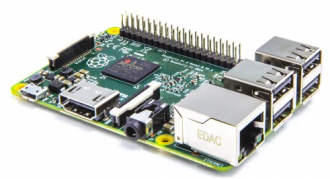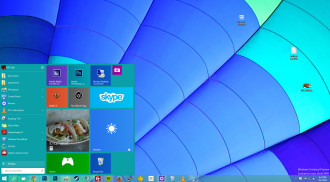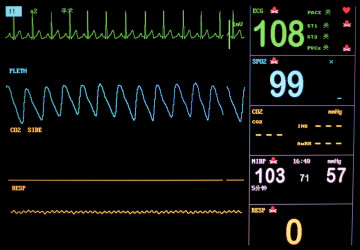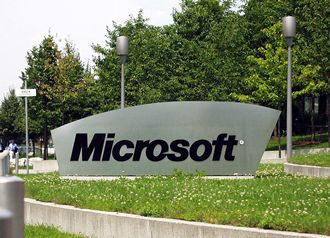 The people who make popular do-it-yourself circuit board said that they’ve released a new version of the device.
The people who make popular do-it-yourself circuit board said that they’ve released a new version of the device.
 The people who make popular do-it-yourself circuit board said that they’ve released a new version of the device.
The people who make popular do-it-yourself circuit board said that they’ve released a new version of the device.
 Microsoft appears to have further muddied the waters with its announcements about Windows 10 last week.
Microsoft appears to have further muddied the waters with its announcements about Windows 10 last week. Taiwanese suppliers of notebooks are not over impressed by the news last week that Microsoft will give free upgrades to its Windows 10 operating system.
Taiwanese suppliers of notebooks are not over impressed by the news last week that Microsoft will give free upgrades to its Windows 10 operating system.
 Microsoft has released details of Windows 10 and said that it will be free for many current Windows users.
Microsoft has released details of Windows 10 and said that it will be free for many current Windows users.
The company unveiled the Windows 10 consumer preview yesterday and showed off many new features which will be available.
What is surprising is that Windows 10 will be free for existing Windows users running versions of the OS, going back to Windows 7. That includes Windows 7, 8, 8.1 and Windows Phone.
Microsoft said that the upgrade would be free for the first year of release, but people would need to pay for it after that. However, Microsoft will support the upgrade for the “lifetime of the device”.
Microsoft CEO Satya Nadella said at the event he wanted Windows 10 to be the most loved release of Windows. It will have services everywhere but no bolted on apps.
There will be a new web browser for Windows 10, codenamed Project Spartan. It’ll be the primary browser in Windows 10 and will be available on PCs, tablets and phonesallows users to “draw” directly on a web page for quick sharing of notes. It includes a fully integrated reading list that follows a user across devices, as well as a built-in PDF viewer.
Another unusual thing about the OS is the use of a sort of virtual reality, called Windows Holographic, powered by a new kind of device called the HoloLens.
Microsoft’s Corporate Vice President of the Operating Systems Group, Joe Belfiore, announced it would bring back the much-missed Start Menu, but Belfiore revealed it would also have a full-screen mode that includes more of the Windows 8 Start screen. He also said Windows machines would go back and forth between two menus in a way that would not confuse people. Right.
Belfiore also showed a new notification centre for Windows, which puts a person’s notifications in an Action Center menu that can appear along the right side, similar to how notifications work in Apple OS X.
There is also a thing called Continuum to help so-called hybrid devices flip between themselves. Removing a keyboard from a tablet like the Surface Pro 3, say, will call up a dialogue box asking if a human wants to switch to tablet mode.
Microsoft has also parked its Cortana into Windows 10. People will be able to access it using a search bar next to the Windows logo in the taskbar.
Describing Cortana showed how users could ask it to play music, answer queries launch apps and open specific files, like a PowerPoint deck you’ve been working on. Cortana is also built into Spartan.
Windows 10 can work on devices smaller than 8 inches, which would have a special version of the OS tuned to the precise touch capabilities needed.
As an example of Universal Windows Apps, which are apps that provide a multi-modal experience across devices, Belfiore showed off revamped mobile versions of Microsoft Office.
The “consumer preview” version of Windows 10 will be available for PCs starting next week, and for phones in February. Some of the Windows 10 features Microsoft showed at the event will not immediately be available in preview builds of the software, but will roll out in the next three to four months.
Microsoft hasn’t yet set a date for the general release of Windows 10, but it’s expected to launch in the Autumn. Or Fall. Pride comes before a fall.
 Although Windows 10 won’t launch until the second half of this year, Microsoft is attempting to keep us interested by revealing more features of the operating system.
Although Windows 10 won’t launch until the second half of this year, Microsoft is attempting to keep us interested by revealing more features of the operating system.
 Software giant Microsoft killed off “mainstream support” for Windows 7 yesterday.
Software giant Microsoft killed off “mainstream support” for Windows 7 yesterday.
Leaving mainstream support only means that Windows 7 will not be receiving any new features or product tweaks, such as DirectX 12 gaming technology slated to launch with Windows 10. Free software support from Microsoft is not going to happen either.
Once a Windows desktop operating system leaves mainstream support, it enters the extended support phase. Windows XP was in that state from early 2009.
Users will still get security patches during extended support, which means that Windows 7 will not be cast out completely yet. Hotfixes will still be provided, too, assuming they are security related.
Extended support for Windows 7 lasts until January 14, 2020 so if you are happy with all that, there is no reason to rush to upgrade.
However, it is a sign that Microsoft has given up on the operating system, which is subjectively seen as being better than its successor.
 The arrival of Windows 10 and the introduction of 14 nanometre microprocessors are unlikely to stimulate much demand for PCs in 2015.
The arrival of Windows 10 and the introduction of 14 nanometre microprocessors are unlikely to stimulate much demand for PCs in 2015.
 Microsoft’s forthcoming OS Windows 10 has been praised to the skies by thinkpad maker Lenovo.
Microsoft’s forthcoming OS Windows 10 has been praised to the skies by thinkpad maker Lenovo.
Lenovo Peter Hortensius, chief technology officer at Lenovo told PC World that customers are anxious to breathe some life into Windows 10 and his outfit was bullish and hopeful about Windows 10.
Windows 10 will succeed Windows 8.1 operating system, which has been slammed for its touch-based tablet user interface. Windows 10 will resolve many problems affecting Windows 8.1, which is a good OS but has its problems, Hortensius said.
Windows 10 will boot straight to the desktop and brings back many familiar Windows 7 features, which Microsoft hopes will please OS loyalists. It also removes program incompatibility issues plaguing Windows Phone and Windows 8 versions for Intel and ARM processors.
Analysts have said Windows 10 could spur a round of PC upgrades in businesses, which could boost PC shipments. Lenovo’s shipments have increased even as rivals like Dell and Hewlett-Packard struggled in recent years as laptop and desktop shipments slowed.
Customers are responding well to changes in Windows 10, and Microsoft is taking the right approach in developing the OS, Hortensius said.
Lenovo was positive about where the product was going and depending on customer demand, Lenovo may consider the OS for a range PCs, tablets and handsets.
“It’s up to Microsoft to make competitive offerings. If they do… we’ll gladly use it,” Hortensius said.
 Even though Windows 10 will not now be ready until the second half of next year, Microsoft is going to show off its latest version in mid January.
Even though Windows 10 will not now be ready until the second half of next year, Microsoft is going to show off its latest version in mid January.
And it’s bowing to the inevitable by throwing out much of the clunky code that makes up Internet Explorer and introducing a streamlined browser called Spartan, according to reports.
Microsoft was late to the internet game in the 1990s and has had trouble catching up with competitors ever since.
Microsoft wants its browser to be a lot more like more popular browsers like Firefox and Google Chrome, and to try to shake off perceptions that its behind the times. It will allow extensions to the browser and it will be backwards compatible with previous versions.
According to Mary Jo Foley at ZD Net, Windows 10 will ship with both Spartan and Internet Explorer 11 – something of a kludge in itself.
The version of Windows 10 that Microsoft will show off is called the Windows 10 Technical Preview and will include a number of additional features in the long build up to its release in the second half of next year.
Microsoft is also likely to port the Spartan browser to other operating systems, such as Android.
 A company based in Seattle that is launching an operating system next year is not getting a positive vote from hardware companies desperate to sell more kit.
A company based in Seattle that is launching an operating system next year is not getting a positive vote from hardware companies desperate to sell more kit.
Microsoft is introducing an operating system next year called Windows 10 that is already delayed and will be free of charge to anyone who has made the mistake of instaling or buying Windows 8.1.
Microsoft is jumping from Windows 8 to Windows 10, ignoring the number nine, purely for marketing reasons.
But according to Taiwanese wire Digitimes, PC vendors in the country are shaking their heads because they don’t feel that people will spend money on new kit.
It quotes vendors as saying that Microsoft’s partnerships with Oracle and VM Ware will also adversely affect PC hardware vendors.
To read between the lines, it seems that the hardware vendors are telling the rather ancient Microsoft that it’s history.
 People eager to throw off the shackles of Windows 8.x look like they’ll have some time to wait before they’re free at last.
People eager to throw off the shackles of Windows 8.x look like they’ll have some time to wait before they’re free at last.
According to PC Advisor, a “consumer preview2 will be released in January so you’ll be able to see what you’re missing for quite a long time. Windows 10 isn’t now expected until the second half of next year.
Reuters, quoting Microsoft’s chief operating officer, Kevin Turner, said the launch was likely to be the early Autumn.
Reports suggest that Windows 10 may well be free of charge to existing Windows 8.x users. Microsoft isn’t giving any details of prices yet and so no one is clear what the upgrade paths are likely to be.
The operating system is likely to look more like Windows 7 than Windows 8.x – the latter was Microsoft’s ill fated attempt to resemble other tablet operating systems like iOS and Android.
Even Microsoft insiders wondered what the company was doing with such a hybrid.
Microsoft’s decision to skip the number nine and jump straight to Windows 10 seems to be some kind of weird marketing move – as usual, it is describing the future OS as the “best OS yet”.
 A report said that sales of notebooks using Microsoft Windows 10 are likely to be hit because Intel will be tardy releasing an appropriate chip.
A report said that sales of notebooks using Microsoft Windows 10 are likely to be hit because Intel will be tardy releasing an appropriate chip.
Digitimes Research said that the Intel Skylake microprocessor is supposed to be ready at the beginning of the third quarter in 2015 but will probably not hit the streets until the end of next year or even 2016.
The news will plunge Microsoft into the depths of despondency. It is already taking a hit because uptake of the notoriously shabby Windows 8.x isn’t going to plan.
Windows 10 is supposed to be the summum bonum – that is to say it will work properly because there won’t be a Windows 9.
Digitimes Research estimates that Intel’s delays won’t make the acceptance of Windows 10 any easier and it appears the alliance between Microsoft and Intel is crumbling.
Intel could not be contacted for comment at press time.
The report is here.
 Just a day after HP decided to split itself in half, a report suggests that it is the only of the top five brands to see a decline in notebook shipments in September.
Just a day after HP decided to split itself in half, a report suggests that it is the only of the top five brands to see a decline in notebook shipments in September.
Data published by Digitimes Research said that, over all, the top five vendors showed growth of 19 percent last month. Asustek managed to grow its shipments by 70 percent compared to the same month in 2013 and Lenovo managed 40 percent growth.
There are some sea changes in the market in any case, said the research arm. Samsung and Toshiba have decided to retreat from some segments of the market. Samsung, for example, has given up the ghost on Chromebook sales in Europe.
Toshiba has exited several markets including South Krea, China and Russia.
The report said that adoption of Windows 8 has been pretty patchy, but Windows 10, due to arrrive in the second half of next year, might well give Microsoft a boost on the upgrade front. People can move from Windows 8 to Windows 10 without paying any more and that’s a tacit admission that it thinks it was a flop too.
 When software giant Microsoft declared that its new operating system would be called Windows 10, many of us wondered what was wrong with Windows 9 as a name.
When software giant Microsoft declared that its new operating system would be called Windows 10, many of us wondered what was wrong with Windows 9 as a name.
After all, the number, nine has a good reputation. There were, for example, The Nine Worthies – nine historical, or semi-legendary figures who, in the Middle Ages, were believed to personify the ideals of chivalry. There are nine muses in Greek mythology including Calliope, Clio, Erato, Euterpe, Melpomene, Polyhymnia, Terpsichore, Thalia, and Urania.
Of course, there were nine circles of Hell in Dante’s Divine Comedy, but that was unlikely to put people off buying an operating system. Microsoft claimed that Windows 10 was so cool and so unlike the doomed Windows 8 that it was unfair to call it Windows 9, which is about as unlikely as Mark Hurd returning as the CEO of HP.
Now it seems a Microsoft developer has spilled the beans. Microsoft skipped Windows 9 and went straight to 10 fearing a problem like the Y2K bug.
The developer “Cranbourne” told Rededit that “early testing revealed just how many third party products had code in the form of Windows 9”, referring to benchmark operating systems Windows 95 and Windows 98.
He said: “This was the pragmatic solution to avoid that.”
Basically there was a lump of short-sighted code short cut designed to differentiate between Windows 95 and 98 that was too stupid to grasp that there was now a Windows 9.
It sounds daft, but Indie developer Christer Kaitila pointed out that more than 4,000 applications use the ancient coding cock-up somewhere under the bonnet of their software.
Microsoft would make each of them think that they were looking at Windows 98 rather than Windows 9 and when it could not find the floppy drive, or see a hard-drive bigger than a GB, they would pack a sad. Microsoft was never very good at software, to be fair, but excellent at marketing.